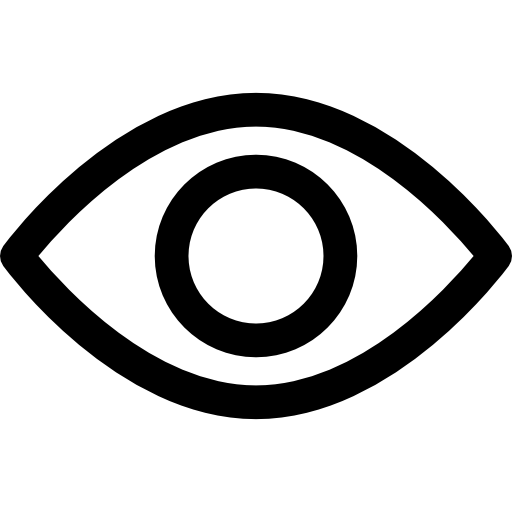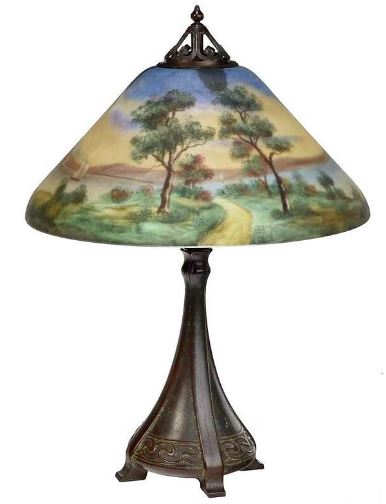Identification and Price guides for Antiques & Collectibles


COLLECTIBLE REVERSE PAINTED LAMPS:
A Guide to Researching and Valuing Them
Join the most updated and complete collectibles research online - Learn more...
 Collecting antiques is a passion for many people, and the world of antique lamps offers a wide variety of styles and designs. One style that has gained popularity among collectors is reverse painted lamps. These lamps are unique in that the design is painted on the inside of the lampshade rather than the outside. In this guide, we will explore the history of reverse painted lamps, how to research and value them, and tips for starting your own collection.
Collecting antiques is a passion for many people, and the world of antique lamps offers a wide variety of styles and designs. One style that has gained popularity among collectors is reverse painted lamps. These lamps are unique in that the design is painted on the inside of the lampshade rather than the outside. In this guide, we will explore the history of reverse painted lamps, how to research and value them, and tips for starting your own collection.
History of Reverse Painted Lamps
Reverse painted lamps first became popular in the United States during the early 20th century. They were made by hand and featured intricate designs, often depicting pastoral scenes or floral patterns. The lamps were made by painting the design on the inside of the glass shade using a technique called reverse painting. The shade was then placed on top of a metal base, usually made of bronze or cast iron.
Reverse painted lamps were popular because they offered a unique way to add color and beauty to a room. The lamps were often used as accent pieces in homes, and they were also popular in hotels and restaurants. Today, reverse painted lamps are considered highly collectible, and they can command high prices at auction.
Researching and Valuing Reverse Painted Lamps
If you are interested in collecting reverse painted lamps, it is important to know how to research and value them. Here are some tips to help you get started:
- Learn about the history of reverse painted lamps. Knowing the history of the lamps and how they were made can help you appreciate the craftsmanship that went into creating them.
- Look for identifying marks. Many reverse painted lamps were made by well-known companies such as Pairpoint, Handel, and Jefferson. These lamps often have a maker's mark or label on the base or shade, which can help you identify the manufacturer and date of production.
- Consult reference books. There are many books available on the subject of antique lamps, including those specifically focused on reverse painted lamps. These books can provide valuable information on the history, design, and value of the lamps.
- Attend antique shows and auctions. Attending antique shows and auctions can provide an opportunity to see and handle reverse painted lamps in person. You can also learn about current market values by observing bidding and sales prices.
- Consult with experts. If you are serious about collecting reverse painted lamps, it may be worthwhile to consult with an expert in the field. An expert can provide guidance on identifying and valuing lamps and may be able to help you acquire specific pieces for your collection.
When valuing a reverse painted lamp, there are several factors to consider. These include the age and condition of the lamp, the rarity of the design, and the manufacturer. Generally, the more intricate and detailed the design, the more valuable the lamp will be. Lamps in excellent condition with no chips, cracks, or repairs will also command higher prices.
Tips for Starting Your Collection
If you are just starting your collection of reverse painted lamps, here are some tips to help you get started:
- Start with a budget. Determine how much you are willing to spend on a lamp and stick to that budget.
- Focus on quality over quantity. It is better to have a few high-quality lamps in your collection than many lower-quality pieces.
- Look for lamps with designs that appeal to you. Collecting should be enjoyable, and you will be more satisfied with your collection if you choose lamps that you truly love.
- Consider the style of your home. Reverse painted lamps come in a variety of styles, from Art Nouveau to Art Deco. Choose lamps that complement the overall style of your home.
- Be patient. It can take time to find the perfect piece for your collection. Don't rush to purchase a lamp just to add to your collection. Wait until you find one that truly speaks to you.
- Join a collector's group. Joining a group of collectors who share your interest in reverse painted lamps can provide valuable information and resources. You can also attend events and meet other collectors who can share their knowledge and expertise.
Conclusion
Collecting reverse painted lamps can be a rewarding and enjoyable hobby. By learning about the history of the lamps, researching and valuing them, and following these tips, you can start your own collection of these beautiful and unique works of art. Remember to focus on quality over quantity, choose lamps that appeal to your personal taste, and be patient in your search for the perfect piece. Happy collecting!
Unlock the true value of your collection with our comprehensive research guides from identifying makers' marks to appraising all kinds of antiques and collectibles, including items featured in this article.
Our up-to-date information will give you an accurate understanding of your items' worth. Don't miss out on this valuable resource - visit our research tools today!
In addition to some examples shown below on this page, you can also search our price guide for your own treasures.
Examples of related items from our Price Guides
-
VINTAGE REVERSE PAINTED LAMPVintage Hand [more like this]
-
A. & R. COMPANY REVERSE PAINTED LAMPA. & [more like this]
-
A 1930S REVERSE PAINTED LAMP MANNER OF MOE [more like this]
-
REVERSE PAINTED LAMP COUNTRYSIDE SCENEReverse [more like this]
-
Handel American, Early 20th Century Reverse [more like this]
-
SIGNED CLASSIQUE CHIPPED ICE REVERSE PAINTED [more like this]
-
PAIRPOINT CHIPPED ICE REVERSE PAINTED LAMP [more like this]
-
JEFFERSON REVERSE PAINTED LAMP Domed cast [more like this]
-
REVERSE PAINTED LAMP ATTRIBUTED TO PITTSBURGH.Early [more like this]
-
JEANETTE REVERSE PAINTED SCENIC LAMPJeanette [more like this]
-
PAIRPOINT REVERSE PAINTED LAMPSigned Pairpoint [more like this]
-
REVERSE PAINTED RIBBED LAMP: Reverse painted [more like this]
There are many more auction results available to our members...
Explore more items from our
Antiques & Collectibles Price Guide
PAIRPOINT LAMP WITH REVERSE PAINTED[more like this]
REVERSE PAINTED RIBBED LAMP: Reverse[more like this]
PITTSBURGH REVERSE PAINTED ART GLASS[more like this]
AN ARTS AND CRAFTS REVERSE-PAINTED TABLE[more like this]
EARLY 20TH CENTURY PAIRPOINT TABLE LAMP,[more like this]
REVERSE PAINTED RIBBED GLASS PANEL TABLE[more like this]
Art Nouveau Tiffany style lamp, reverse[more like this]
This list is limited to only a few results.
Many more items are available to our members through our
Price Guides!






